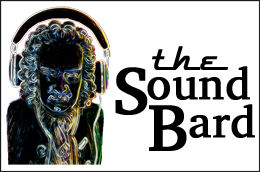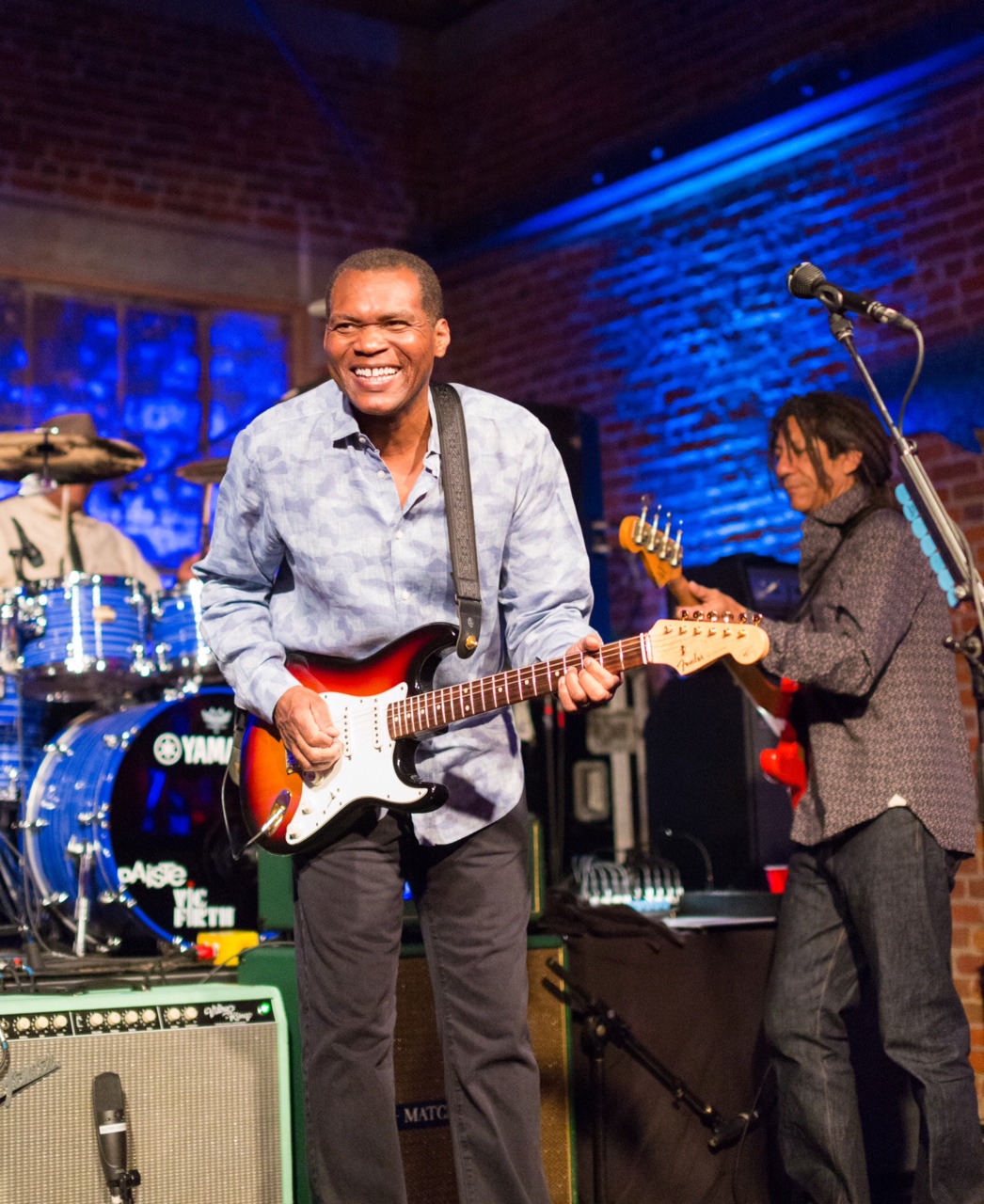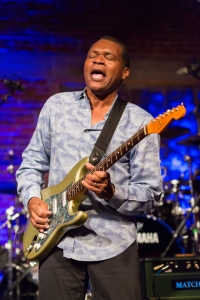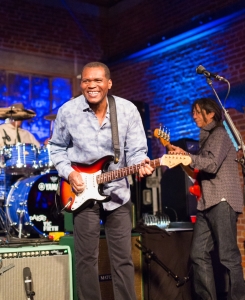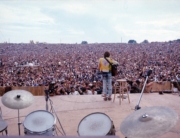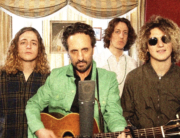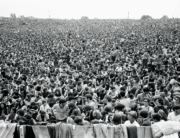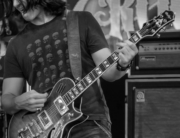BY MIKE METTLER — AUGUST 26, 2015
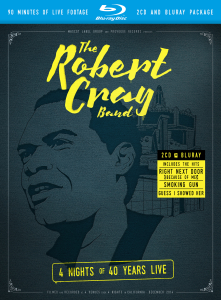 It’s hard to believe, but the eternally youthful blues maestro Robert Cray is celebrating five decades of plying his craft with the imminent release of 4 Nights of 40 Years Live (Provogue) in various formats, including Blu-ray + 2 CDs, DVD + 2 CDs, and LP + digital download card. So, uh, Robert, do you mind if we call you an “elder statesman” at this point in your career? “Well, we’re doing what we do, and I’m having fun doing it. To me, that’s the most important thing,” says Cray. “How we’re perceived is how we’re perceived. It’s funny; whenever it’s mentioned that we’re ‘getting up there,’ I always revert back to my heroes — John Lee [Hooker], and B.B. [King] — and I just think about those guys as being ‘the guys.’ I never consider myself as being on the same ship.”
It’s hard to believe, but the eternally youthful blues maestro Robert Cray is celebrating five decades of plying his craft with the imminent release of 4 Nights of 40 Years Live (Provogue) in various formats, including Blu-ray + 2 CDs, DVD + 2 CDs, and LP + digital download card. So, uh, Robert, do you mind if we call you an “elder statesman” at this point in your career? “Well, we’re doing what we do, and I’m having fun doing it. To me, that’s the most important thing,” says Cray. “How we’re perceived is how we’re perceived. It’s funny; whenever it’s mentioned that we’re ‘getting up there,’ I always revert back to my heroes — John Lee [Hooker], and B.B. [King] — and I just think about those guys as being ‘the guys.’ I never consider myself as being on the same ship.”
Sorry to disagree with the man, but Cray is most definitely onboard with being on par with the masters of the blues art form. His true vibrato is on full display on 4 Nights, from the tough yet mannered resignation of “Bad Influence” to his mind-bending string-bending solo in “These Things.” The bonus disc is culled from a performance at the 1982 San Francisco Blues Festival and a 1987 appearance on the Dutch TV show Countdown, featuring Cray classics like “Smoking Gun” and “I Guess I Showed Her.” The Blu-ray disc features selections from both the 4 Nights set and the archival material on CD 2.
I called Cray, 62, at his hotel during a tour stop in the Pacific Northwest to discuss the sonics of 4 Nights, the ongoing merits of vinyl, and why live woodshedding is vital for bands who want to improve. “Oh yeah, there’s been a lot of change over the years,” Cray observes about his storied career. I guess he showed us.
Mike Mettler: You put your last studio record, In My Soul (2014), out on vinyl, so I’m going to assume you still love that format.
Robert Cray: Big time! I just put in an order with my bass player Richard Cousins, who’s making a 60-mile trip up to an old record shop we used to visit when we lived in Eugene, Oregon. He’s going to the House of Records there, so I put in a few requests.
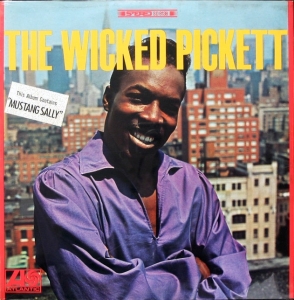 Mettler: Oh yeah? What are you looking for right now — new stuff, old stuff…?
Mettler: Oh yeah? What are you looking for right now — new stuff, old stuff…?
Cray: Old stuff. I’m looking for some old Wilson Pickett albums like The Wicked Pickett (1967), and I’m also looking for Sonny Rollins Plus 4 (1956).
Mettler: It’s great that a lot of classic music we love has been reissued on 180-gram recently, like a lot of that vintage jazz stuff —
Cray: Oh yeah, that’s great — all that Blue Note stuff.
Mettler: Yes! So why do you still like vinyl so much?
Cray: The sound! It’s all about the sound, you know? I found the receipt for an old McIntosh amp that I bought in 1993, and I’ve been going back to my vinyl for a while now. Everything is so compressed nowadays with the files and the CDs. Everybody got swindled getting behind the CDs, you know? (chuckles)
But more recently, the vinyl stores are pumping up, and they’re everywhere now. The reissue stuff is great, and there’s a lot of new stuff too, as you said. And the kids are getting into it.
Mettler: That encourages me. Instead of skipping around with individual tracks, it’s more about listening to a side of something all the way through for 20-odd minutes. And because it’s ritualistic, you also get more involved in the whole process.
Cray: Exactly! One thing that we’ve always done and never changed is that when we make an album, we put it together to be listened to in its entirety, in order.
Mettler: Sequencing is also super-important to you, then.
Cray: Yes it is.
Mettler: Especially when composing a live set like you’ve done here, there’s an arc to the journey you want us, the listeners, to go on specifically.
Cray: It’s like telling a story, with a bigger picture. That’s what you try to do with it.
Mettler: For this record, did you go through different running orders, or keep it consistent with the way the live set list usually unfolds? How do you know what follows what?
Cray: With us, it starts with something to get people’s feet planted. So the way I like to do a set list is try to get my feet planted at first, and do something where I can find myself —
Mettler: — to make us “Shiver,” literally —
Cray: (laughs) Yeah, “Shiver,” exactly! [“Shiver” is the song that opens 4 Nights.] And then go for it. Once your feet are planted, then you can start telling your story, you know? Start raising the parameters, so to speak. You start going up the mountain, go to a peak, then bring them back down, and rock them back out.
Mettler: “Right Next Door (Because of Me)” has always been one of my favorites in your live set, I have to say.
Cray: Thank you. “Right Next Door,” as everybody knows, is one of our staples, and one of our most popular tunes. It was written by our good friend and former co-producer Dennis Walker. He comes up with just the most beautiful pictures when he writes. We have a really good time with that tune, and we try to help that painting when we’re onstage. It’s a great song.
Mettler: And it’s at the right point in the set too. You really can’t have it come much earlier than where it is.
Cray: No, you can’t. No, you have to go through a lot of other emotions before you really “tell” them stuff. (chuckles)
Mettler: You gotta build up before you ’fess up.
Cray: Yeah, exactly.
Mettler: You’ve worked with producer Steve Jordan on a number of records over the years. You guys must have a shorthand about how you want your mixes to go, right?
Cray: The reason I like to work with Steve is he’s big into sound. When we first started working with Steve, we recorded onto 2-inch tape, but the big studios have gotten rid of their 2-inch tape machines. Knowing how Steve and our good friend and engineer Niko Bolas enjoy working with tape, they’ve figured out ways to get really close to that tape quality. And that’s with recording at a higher sampling rate. They’re very passionate about it.
Also, the music runs through a 2-inch machine. Knowing that Steve and Niko both like that kind of sound, I just stand back. (laughs) They know how to get what I like.
Mettler: That totally suits your style, because there’s such a pure tone to your true vibrato. And at the MP3 level, some of that individual character can get lost.
Cray: Exactly! You can’t muffle it.
Mettler: This is a tone you’ve perfected over these 40-odd years, and we have to hear that come through as you, and you know when it doesn’t sound right.
Cray: Yes, I can tell about the quality of the playback.
Mettler: Do you give Steve or Niko any particular directions about where you want them to “paint”?
Cray: No, I don’t; I just stand back. And then they give me something to listen to, and I say “yea” or “nay,” but I don’t really have to do anything. (chuckles) Like I mentioned before, it’s the sound, and I love the sound. Steve and Niko have turned me onto understanding the richness of sound.
Mettler: That’s good, because I think they’ve nailed it perfectly, especially on songs like “Bad Influence.” Do you sometimes pinch yourself and say, “How did I get to 40 years? How did that happen?”
Cray: (laughs) Well, I didn’t have to pinch myself, but it’s kind of amazing it’s been that long, especially when it doesn’t seem like it. But pictures do not lie! (MM laughs)
Mettler: You might have a Dorian Gray photo up there with you onstage, Robert. You don’t look that worse for wear. (both laugh)
Cray: (still chuckling) Thanks.
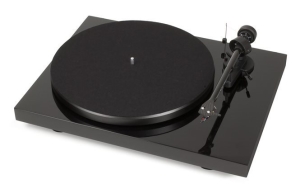 Mettler: What kind of turntable do you have in your system?
Mettler: What kind of turntable do you have in your system?
Cray: One of those Pro-Ject Debut Carbon models that has the Piano Black base, with the stylus pre-loaded. I’ve had it now for maybe 10 years. I bought it at a shop in Minneapolis, and had it sent to my house.
Mettler: What kind of speakers do you have?
Cray: A pair of Klipsch speakers, but they’re not set up right now. I also have Smithline studio monitors, which were made back in the ’80s by a good friend of ours in Los Angeles. They’re really tight little monitors. I have them in my practice room, along with a McIntosh MC225 amp and a McIntosh MX-110 preamp/tuner. I’m running everything through that, and it works really well.
Mettler: I like that setup. You can’t go wrong the the Blue [i.e., the McIntosh gear]. I mean, you know what clean sound is. And at this stage, you’re the king of true vibrato, if we can call that a thing.
Cray: (chuckles) Oh man, I fell in love with that vibrato a while back, you know? The gospel music I was listening to, and the Wilson Pickett stuff I loved — Robert Ward was the guitar player on all that stuff; just beautiful. I talked to Bo Diddley about all that years ago too. A Magnatone amplifier — that’s the amp that had the true vibrato, and it’s great. I have four of those amps. Some of them are stereo and some of them are mono, but the stereo ones are really magical; they’re really cool.
Mettler: You mentioned B.B. King earlier. Since he passed away recently [on May 14, 2015], do you mind sharing some of your thoughts about him?
Cray: Yeah, my thoughts about B.B. — everybody knew the stage was the only way B.B. was going to quit music. The stage would have to take him out. And so it really doesn’t come as a surprise.
That being said, I’m going to “see” him, you know, in a few months on another gig. That’s how it always is, and always has been. You don’t always see your friends and heroes on the road. You come together for a gig here and there, and several months will pass before you see them again. That’s how I look at my friendship with B.B. — I’ll see him. I’ll hear him on record and go, “OK; there he is.”
Mettler: Right, that’s where he is now. Do people ask your advice for how to carry on the blues tradition in this modern world?
Cray: Everybody has their own way of going about things, and nowadays, there are so many different options thanks to the Internet, so people are doing that. It’s different in the sense that I don’t think there are as many places to play as there used to be. We were happening because there used to be a lot more clubs, and they used to have a lot more blues. It seems to me the clubs are diminishing. They were the starting grounds and the proving grounds for bands. But it’s a little more difficult now. Also, with these TV shows where you’re supposed to be a star in an instant — it’s kind of crazy. I don’t think that’s fair. That’s not healthy for people.
Mettler: You need to have that good woodshedding time where you cut your teeth out there to get your chops up. You certainly put in a lot of time out on the road yourself.
Cray: Exactly. You gotta work. You gotta do that work. Somebody will come up to me and say, “You know, it’s really hard out here. What’s going on?” They think it’s supposed to happen right now, but it doesn’t. So I say, “Get together with others, and play for the fun of it. If it’s not fun, it’s not worth doing.” It’s a great opportunity to play with other people, and you have to get out there and just suck for a while. (both laugh)
Mettler: When did you get to the point where you felt comfortable enough to know you could make a living playing this kind of music?
Cray: We started the Cray Band when I was 20, and when Richard Cousins was 19. But we started because we just wanted to play. I mean, sure, we wanted to make a living at it. We didn’t have any idea it would take us to where it did. We just wanted to get gigs and play. So when we started to get club gigs, that was fantastic. And then work at a club on Saturdays, and combine the two — that was cool. It was all fun — and it still is, even though things happened that we didn’t expect to happen. That’s the kind of attitude you have to have.
And the kind of music we were playing was not popular on the radio at the time. We wanted to play Elmore James and James Brown, and stuff like that. Other bands were playing Top 40.
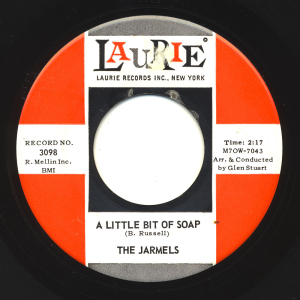 Mettler: What was the first record as a kid that caught your ear and stuck with you?
Mettler: What was the first record as a kid that caught your ear and stuck with you?
Cray: The first record I bought was when we were in Munich, Germany, because my dad was in the Army. We used to go to the PX all the time, and the one I wanted to buy when my dad took me there was a song by a group called The Jarmels, “A Little Bit of Soap” (1961). (chuckles) We were in Germany from 1960 to mid-1963, and my parents had this big Grundig console. Records at the PX were pretty cheap, so we had Ray Charles, Bobby “Blue” Bland, and Jackie Wilson. On Sundays, it was the gospel music. We heard a lot of music growing up.
Mettler: And it all went into the cauldron. Do you recall the first blues song you played on guitar, the first one you feel you mastered?
Cray: Oh, that’s never happened. (both laugh)
Mettler: OK, maybe that was a loaded question.
Cray: No, nothing’s been mastered. That’s not part of my repertoire! In the early days, we used to play a lot of Albert Collins’ stuff. We had fun with songs like “Frog Jumpin’,” “Freeze,” and “Frosty.” [Cray eventually teamed up with Albert Collins and Johnny Copeland for Showdown!, a searing blues album released by Alligator Records in 1985 that won a Grammy for Best Traditional Blues Recording in 1986.]
Mettler: Would you say that the audiences you played for in those early club days knew the material you were covering, or not?
Cray: No, they didn’t know that. They didn’t know all of it. When we were in the early Cray Band days — it was in Eugene, Oregon, where we started — there was this other band, Curtis Salgado and The Nighthawks, and that band had been in town years before we got there. They were plying the audiences with blues and R&B, so we befriended them when we got to town, and we started doing double gigs together. The audiences were aware of the bands playing that music, but I’m sure they didn’t know a lot of what it was.
Mettler: Whenever I heard something I liked in a live set, I’d try to find out exactly what it was, and then I’d go buy it.
Cray: I don’t know that that audience had the same kind of mindset as we musicians had. I wanted them too.
Mettler: I called it “voting” with my dollars. Maybe the vinyl revival is helping other get into that mindset now.
Cray: Just like we talked about earlier, I think that’s what the young people are picking up on now. For us, it’s that ritual. Putting that record on, reading the [liner] notes — the notes meant something, and you could actually read them without a magnifying glass or a microscope, or something. And the artwork too, at a size that’s appreciable.
 Mettler: I’m with you on all of that. Now let’s talk about your gear. You have a signature Strat that contributes to that tone of yours. What instructions did you give Fender for how that guitar should be made?
Mettler: I’m with you on all of that. Now let’s talk about your gear. You have a signature Strat that contributes to that tone of yours. What instructions did you give Fender for how that guitar should be made?
Cray: We based that on a combination of two Strats that I have — one is a 1964, and one is a 1958. Basically, we were looking for a neck that was a combination of the two. Then we worked on the pickups for a little bit. As everybody knows, my sound is a bright sound for the most part, but also in some points, with the treble pickup, it’s a little bit dirty. That’s what we were looking for.
Mettler: Does it boggle your mind when people say they have “that Robert Cray tone”?
Cray: I hear people say that. It’s kind of funny. (chuckles) I’ve read things where people say they have the same kind of amp setup and same kind of guitar, but they can’t get that tone. Then there’s only one thing missing — and that’s the hand, and your approach to the instrument.
Mettler: It’s all in the fingers. You can have the same equipment, but it has to come out of your own soul to get that sound across. So no pressure on you, sir. You have to keep carrying this on now.
Cray: (laughs) I’m doing it because we’re having fun! That’s the bottom line.
Mettler: Another thing I like is, having listened to a number of different live albums of yours and seeing you live over the years, is hearing the way these songs have evolved over time.
Cray: Everything changes, and we have to be open to that kind of thing. We never try to stick to the exact recording. Sometimes it’s different personnel in the band. The tempo is going to be different on a lot of the songs, and different personalities are going to play it in different ways. You have to be in the moment.
Mettler: And you’re not playing the same set every night, either.
Cray: Right. No, not the same. And we also are “calling” the sets now. So it’s a lot of fun.
Mettler: That’s great. So I expect that, 40 more years down the line, we’ll get another live set like this. Is that what you’re looking to do?
Cray: (laughs heartily) Maybe in 10, there’ll be the 50th!
Mettler: Well, I’ll hold you to that. I see how your longtime friend Mr. Eric Clapton just celebrated his 70th birthday with a show in New York [at Madison Square Garden on May 3, 2015].
Cray: Yeah, that was cool. We were busy. He emailed me and invited me, but we just couldn’t make it happen. I would have loved to have been there.
Mettler: You guys have played together many times over the years. What is it about Eric’s playing that still appeals to you?
Cray: He speaks to you with his guitar instead of preaching with his voice, you know? Great sound, and great tone. Just a wonderful player.
Mettler: Van Morrison came up with a phrase for that — the “inarticulate speech of the heart.”
Cray: Wow! That’s cool!
Mettler: Eric has said before that sometimes what he says comes more out of the guitar than out of his mouth. Leave it to Van to come up with the exact right way to describe it.
Cray: And we all know how great Van is, yeah. That’s fantastic.
Mettler: In this case, a lick says more than a thousand words.
Cray: Yeah, mm-hmm. And that’s what B.B.’s thing is. You take that one note, and it tells you everything.
Tags: 4 Nights of 40 Years Live, A Little Bit of Soap, Albert Collins, B.B. King, Bad Influence, Blues, Bo Diddley, Curtis Salgado, Dennis Walker, Eric Clapton, Fender, Grundig, In My Soul, Johnny Copeland, Klipsch, LP, Magnatone, McIntosh, Niko Bolas, Pro-Ject, Richard Cousins, Right Next Door, Robert Cray, Robert Cray Band, Robert Ward, Shiver, Showdown, Smithline, Smoking Gun, Steve Jordan, Stratocaster, Strong Persuader, The Jarmels, true vibrato, turntable, vinyl, Wilson Pickett
